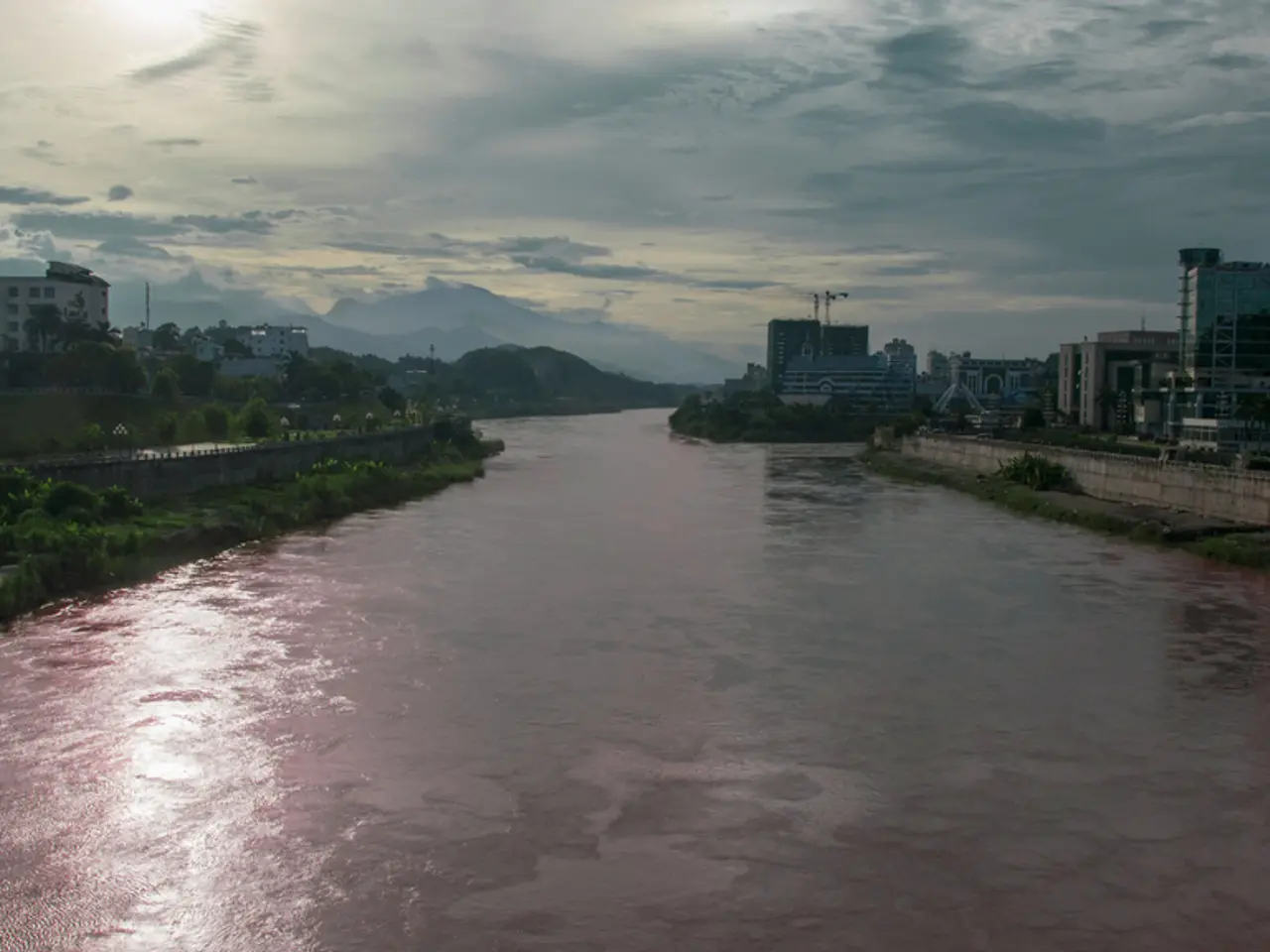Gigantic Dam Construction in China May Induce Seismic Activity: A Substantial Peril to Energy Dominance
The proposed Yarlung Tsangpo River dam in China, also known as the Great Bend Dam, is set to be the world's largest hydropower project with an estimated cost of 1 trillion yuan ($150 billion). This ambitious venture, one of the most costly globally, poses significant technical, environmental, and geopolitical challenges.
## Technical Challenges
The dam's construction requires unprecedented engineering efforts, including drilling several 20-kilometer tunnels to divert the river's flow, which reaches up to 70,600 cubic feet per second. The site, highly seismic, increases risks to the dam's stability. To mitigate these risks, advanced seismic monitoring systems are planned for the dam's construction.
## Environmental Challenges
The Yarlung Tsangpo River flows through one of the world's deepest canyons, raising concerns about disrupting a unique ecosystem. As the river becomes the Brahmaputra in India, any alterations to its flow could affect agriculture and populations in India and Bangladesh. Comprehensive environmental assessments will be conducted for the project, and ecological protection measures are planned to preserve biodiversity in the region.
## Geopolitical Concerns
China is not a signatory to major international water treaties, limiting India's legal options to influence the project. There are fears that China could use the dam to control water flows, potentially affecting downstream regions. Indian authorities and experts have raised significant concerns about the lack of transparency and potential environmental and geopolitical impacts, with calls for bilateral or multilateral agreements to mitigate these risks.
## Addressing Challenges
Chinese officials claim to have conducted thorough geological studies to ensure the project's feasibility and safety, though no precise timeline for construction has been set. The dam's construction could stimulate the local economy through job creation and boost local businesses. The project, if built, would be the most powerful dam in the world, providing enough energy to meet the annual energy needs of 300 million people.
The dam is part of China's broader strategy towards renewable energies and carbon neutrality by 2060. This includes developing wind and solar parks and commissioning new nuclear power plants. The Yarlung Tsangpo River dam project represents a new era for hydroelectricity and innovation in renewable energy.
However, addressing the challenges requires more transparent and collaborative approaches to ensure project safety and viability. Boosting local businesses, preserving biodiversity, and promoting renewable energy are commendable goals. Yet, the success of the project depends on addressing the concerns of local communities, neighbouring countries, and the international community.
- The technological challenges of constructing the Yarlung Tsangpo River dam necessitate advanced seismic monitoring systems to mitigate the risks associated with the highly seismic site.
- The environmental challenges of the project involve conducting comprehensive assessments and implementing ecological protection measures to preserve the region's biodiversity and address concerns about disrupting a unique ecosystem.
- Geopolitical concerns revolve around the lack of transparency and the potential for China to use the dam to control water flows, which could affect downstream regions like India and Bangladesh.
- Addressing these challenges requires a more transparent and collaborative approach, as well as addressing the concerns of local communities, neighboring countries, and the international community.
- The Yarlung Tsangpo River dam project is part of China's broader strategy towards renewable energies and carbon neutrality, which also involves developing wind and solar parks and commissioning new nuclear power plants, representing a new era for hydroelectricity and innovation in renewable energy.




